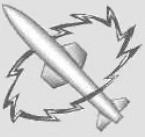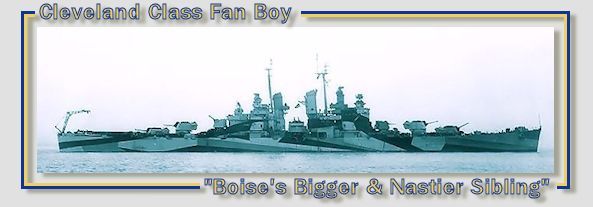FatR
Posts: 2522
Joined: 10/23/2009
From: St.Petersburg, Russia
Status: offline

|
Sorry for absence from forums. However, I was not idle this time, and the rewrite had advanced significantly. See the current changelog:
CRUISERS (RELUCTANT ADMIRAL)
(1)Modifications from the previous versions of RA are copied. Small-calibre flak upgrades for heavy cruisers are brought more in line with my earlier work for the Perfect War mod, however, they are available on later dates in RA.
(2)The Tone class is corrected to Durability 58, belt armor 140. It is unclear why its durability and protection are reduced in stock, while IRL Tones were the most sturdily built and heavily armored IJN cruisers. This change makes the Tone-kai class from previous RA version largely redundant, Iwaki and Hikari now belong to the Tone class.]
(3)Effective range for 5500-ton cruisers is reduced to 5000(14) across the board, to reflect their RL state by 1941 (see Lacroix/Wells p.555). Flak armament and its wartime upgrades tweaked, with the final configurations reflecting the most interesting RL versions of AAA armament and its positioning, but avaialable earlier than IRL.
(4)As surface Allied superiority often proves an even worse problem than air superiority by 1944, all conversion of old cruisers to CLAAs (provided for Tenryu, Kuma and Nagara classes) are optional. A player can keep them all as surface combatants. Nagara CLAAs also keep their torpedo armament.
(5)4 Yahagi-class cruisers (as Oyodo, but constructed as destroyer leaders with full armament) are present in the mod currently (slots 106-109). I've noticed that the cost of Agano vs Oyodo was just 26 400 vs 31 160 thousands of yen (again, from Lacroix/Wells). This, of course, does not fully reflect relative complexity of construction, but it still made me more inclined towards the latter type. Also, it is far closer to what the RA mod player are already familiar with, so maybe we should stick with this type? Art needed (see the beginning of the thread).
However, statblocks for the Modified Agano class also are provided in the file, in case the final vote will be in their favor.
FIRST-CLASS TORPEDO SHIPS (RELUCTANT ADMIRAL)
(1)120/45 guns on Mutsuki-class destroyers are changed from the 10YT (DP) to the historically correct 3YT (non-DP), so that these ships have practically no AA potential at the beginning of the war, as they should.
(2)Upgrades for the Mutsuki class are tweaked in line with the most optimal historical configuration. Less reduction in anti-surface armament during the late war, but ASW potential is reduced (AA potential is lower too, due to #1).
(3)The Mutsuki class APDs are not converted to escorts lare in the war (that didn't happen IRL), upgrades are tweaked accordingly.
(4)Destroyer upgrades are tweaked. Reduction in surface armament in late-war upgrades is nonexistent or much less severe. In particular, torpedo armament is always retained. However, much fewer automatic AA guns are installed in the same upgrades. If surface combat was as important IRL as it is in the game, Japs would do the same.
(5)As the result of points above, Japanese destroyer fleet generally has far weaker and almost bordering on nonexistent AA armament throughout most of 1942. However, as Akizuki-class destroyers start to appear in large numbers, upgrades happen earlier than IRL, and some upgrades actually switch pure naval guns from DP guns (althought usually the same 127/50 3YT, which have pretty bad AA stats), and other DP guns aren't removed (as every old player should know, DP guns are the core of any TF's anti-air defense; they have a chance of firing at any attacker, while automatic guns seem to only protect a ship which carries them), the anti-air potential of IJN combat screen rapidly increases far above the stock levels.
(6)14 Yugumo-class destroyers (including 6 late-war hulls) are removed from the scenario (slots 159-166 and 2938-2943). The remaining 14 DDs of this class are available earlier, in 1942 - first two months of 1943. The Yugumo class is moved to slots 153-166.
(7)Shimakaze is removed from the scenario.
(8)18 Akizuki-class desroyers are added to the scenario (slots 142-148 and 8235-8249). Also, all Akizuki-class destroyers arrive early (before the end of 1944). 10735-10756
(9)Matsu and Tachibana classes are modified. Their standard displacement is increased to 1500 tons, and they carry 2x2 100/65 T98 guns as their main armament. Quintuple and sextuple torpedo launchers are used instead of quadruple (using larger torpedo launchers was planned for these classes IRL, but they were not ready in time). Matsus can upgrade to Kaiten carriers in mid-1945.
(10)9 Tachibana-class destroyers are added to the scenario for late 1945. In addition, other destroyers of Matsu and Tachibana classes arrive much earlier, starting from July of 1943. There is no large numerical increase, because these types are larger than in stock.
SECOND-CLASS TORPEDO SHIPS
(1)20 old 2nd-class destroyers of Momi and Wakatake classes are converted to numbered patrol boats, undergoing a major reconstruction (using old AA weapons removed from first-line ships). The PB-51 class of patrol craft is added to the scenario. Armament includes 1x120/45 3 YT, 1x2 40/61 T91, 2x4 13.2 T93, 1x2 53cm torpedoes, 48 DCs. Speed 25 knots, endurance 5000(14).
Wakatake (PB-51), Kuretake (PB-52), Sanae (PB-53), Asagao (PB-54), Fuyo (PB-55), Karukaya (PB-56), Yugao (PB-57), Hasu (PB-58), Kuri (PB-59), Tsuga (PB-60), Nire (PB-61), Take (PB-62), Kaki (PB-63), Ashi (PB-64), Sumire (PB-65), Hishu (PB-66), Kiku (PB-67), Susuki (PB-68), Tsuta (PB-69), Yomogi (PB-70) are included in this class.
Kaya, Nashi - decomissioned 1940 IRL, become PB-71 and PB-72 (slots 416-417).
(1.2)Added upgrade options for those destroyers of Momi and Wakatake classes that start the war converted to APDs.
(2)2 old destroyers of Momo class begin the war as second-rate escorts. Not reconstructed beyond replacing cannons with DCs and AAMGs.
(3)The Tomozuru class is renamed to Chidori class, for historical accuracy. All TBs remain classified as TBs, insread of Es, as they retain their torpedo armament.
(4)120/45 guns on unupgraded Minekaze and Kamikaze classes are changed from the 10YT (DP) to the historically correct 3YT (non-DP), so that these ships have practically no AA potential at the beginning of the war, as they should.
(5)6 old Minekaze-class DDs are convered to APDs in 1941, instead of 2 (Tachikaze to Nadakaze, slots 317-322), to compensate for absence of Momi/Wakatake APDs. These ships undergo a thorough reconstruction with installation of DP guns and increase of radius at the expense of speed. Those APDs have options for both APD and E upgrades for late war.
SECOND-CLASS TORPEDO SHIPS (RELUCTANT ADMIRAL)
(1)All ships of Minekaze and Kamikaze classes (that aren't converted to APDs and escorts) receive upgrades to the Kamikaze class standards.
ESCORT SHIPS
(1)The only historical class of escorts in the scenario is Shimushu. All other escort classes presented in the scenario are derived from Sokuten/Hirashima minelayer class, rather than Shimushu class. Also, all escort hulls differ only in their degree of simplification and adaptation for rapid building techniques, no building of different-sized ships.
(2)The first class of new escorts is Matsuwa class, first ships laid down in the last months of 1941 and entering service in late 1942. Consists of 12 ships (slots 353-364). 725 tons of standard displacement; initial armament of 2x120/45 3YT (non-DP guns), 2x3 25/60 T96, 60 DCs; Speed 20 knots, Radius 4000 (14).
(3)The second class is Miyake class, first ships laid down in second half of 1942 and entering service in second half of 1943. The slightly improved variant of the previous class, the main differences are replacement of old 120/45 3YT guns with 10YT DP guns and 120 DCs. Consists of 10 ships (slots 365 - 374).
(4)The third class is Okinawa class, built through 1943 to 1945, with the first ships entering service at the end of 1943. A simplified and improved design, with slightly inreased fuel storage. 730 tons of standard displacement; initial armament of 2x120/45 10YT, 3x3 25/60 T96, 120 DCs; Speed 20 knots, Radius 4500 (14). 48 ships (slots 375-412).
(5)C and D class escorts are using the same hull and basic armament as Okinawa class, but less powerful and simpler to make engines. Armament is the same as IRL. Speed is slightly higher, while endurance is lower. Consists of 157 ships (slots 416-546, 613-622 and 6981-6999).
(6)Only 10 subchasers of the Ch-28 class are ordered (Ch-28 through Ch-37, those laid down before the adoption of the Circle Perimeter program), and the concept of the large subchaser is abandoned thereafter, to save manpower and resources for construction of large escorts and destroyers.
(7)3-ship historical Ch-251 class is added to the scenario (slots 8337-8339).
AMPHIBIOUS TRANSPORT SHIPS
(1)4-ship historical Kibitsu Maru LSD class is added to the scenario, arriving from December 1943 to 1945 (slots 2991-2994).
(2)16-ship historical SS LSI/LST class is added to the scenario. The number of ships is lower (16, slots 7385-7399), but they are available early in 1942-early 1943.
(3)Type SB (previously T-101) LSI/LST class is available from summer of 1943, and the number of ships in it is increased to 95 (slots 7441-7499 and 8575-8599) as production contunues throughout 1945.
(4)The number of Type 1 LSI/APDs is increased to 50 (slots 7411-7440 and 8550-8596), as the fist ship become available in mid-1943 and production continues until the end of the scenario.
MINE WARFARE SHIPS
(1)3-ship Ajiro minelayer class (slot 2898 and 14407-08) is added to the scenario (IRL this class consisted of 1 ship, not represented in stock), arriving in late 1943-early 1944.
(2)12-ship Kamishima minelayer/minesweeper (convertable both ways) class (slots 14410-21) is added to the scenario for late 1944 and 1945 (IRL this class also consisted of only one ship).
(3)2-ship Eijo minelayer class (historical) is added to scenario (slots 2899-2900).
(4)W-19 destroyer minesweeper class consists of only 4 ships. 13 more ships starting from W-23 are not ordered, with priority being given to escort construction and, later, smaller minelayers on a standardized hull.
(5)W-101 minesweeper class (historical ships made from captured British hulls) is added to the scenario (slots 624-625).
(6)Many small changes to flak upgrades are introduced for practically every class.
AUXILARIES, GUNBOATS, MERCHANTS, ETC
(1)The old former cruiser Asahi (slot 14405), reconstructed as a submarine tender, is included in the scenario.
(2)Three very old Japanese cruisers (Yakumo, Izumo, Iwate, slots 14402-4) are included in the scenario as patrol gunboats. Just don't expect them to participate in naval combat...
MOTOR TORPEDO BOATS
(1)All Japanese motor torpedo boats in the scenario belong to S-30 class, purchased from Germany or built on license: http://www.navypedia.org/ships/germany/ger_mb_s30.htm
(2)195 of new S-30 class large MTBs (slots 880-885 and 8040-8115, 8120-8229) replace 585 MTBs and MLs from the previous versions of Reluctant Admiral. Deliveries begin in May of 1943 and end in January of 1946. Note that expanded PT boats production also replaces nearly all of midget submarines' wartime production.
GENERAL
(1)In-game fuel loads on various cargo ships, auxilaries, escorts, and mine warfare ships are reduced by 1/3, to compensate for the reduction of their cargo loads compared to stock. These ships effectively take less fuel to travel the same distance. In some cases, where data regarding historical fuel loads is available, it is used instead of the normal reduction, as the game seems to burden Japanese auxilaries and small ships with excessive fuel consumption anyway.
(2)Many upgrades are tweaked. In general, the number of AAMG increased on many classes, but is often lower than in stock before upgrades.
(3)Displacements and other stats on Japanese warships are brought in line with data provided by Jentschura (and most of the sources). Capital ships usually have lesser dispacements than in stock, many older destroyers have bigger (past pre-war reconstruction), and so on.
_____________________________
|
 Printable Version
Printable Version





















 New Messages
New Messages No New Messages
No New Messages Hot Topic w/ New Messages
Hot Topic w/ New Messages Hot Topic w/o New Messages
Hot Topic w/o New Messages Locked w/ New Messages
Locked w/ New Messages Locked w/o New Messages
Locked w/o New Messages Post New Thread
Post New Thread